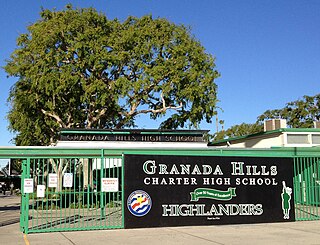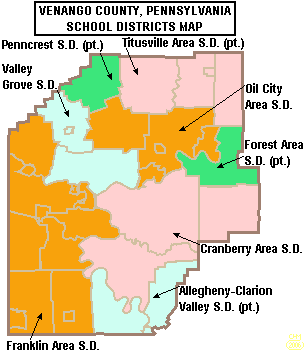School choice is a term for education options that allow students and families to select alternatives to public schools. It is the subject of fierce debate in various state legislatures across the United States.

Charter schools in the United States are primary or secondary education institutions that are public schools which are publicly funded and operate independently, rather than being overseen by local school districts. Charter schools have a contract with local school districts or other authorizing bodies which allow them to operate. These contracts, or charters, are how charters schools bear their name. They are funded with public tax dollars, though they also fundraise independently. Charter schools are subject to fewer rules than traditional state schools in exchange for greater accountability. Proponents argue that they are meant to serve underserved communities that wish to have alternatives to their neighborhood school. Charters are run as either non-profit or for-profit institutions. However, there are some for-profit management organizations that hold charters, though these are only allowed in Arizona. Only non-profit charters can receive donations from private sources, just the same as traditional public schools.

Secondary education is the last six or seven years of statutory formal education in the United States. It culminates with twelfth grade. Whether it begins with sixth grade or seventh grade varies by state and sometimes by school district.
Bolling v. Sharpe, 347 U.S. 497 (1954), is a landmark United States Supreme Court case in which the Court held that the Constitution prohibits segregated public schools in the District of Columbia. Originally argued on December 10–11, 1952, a year before Brown v. Board of Education, Bolling was reargued on December 8–9, 1953, and was unanimously decided on May 17, 1954, the same day as Brown. The Bolling decision was supplemented in 1955 with the second Brown opinion, which ordered desegregation "with all deliberate speed". In Bolling, the Court did not address school desegregation in the context of the Fourteenth Amendment's Equal Protection Clause, which applies only to the states, but rather held that school segregation was unconstitutional under the Due Process Clause of the Fifth Amendment to the United States Constitution. The Court observed that the Fifth Amendment to the United States Constitution lacked an Equal Protection Clause, as in the Fourteenth Amendment to the United States Constitution. However, the Court held that the concepts of equal protection and due process are not mutually exclusive, establishing the reverse incorporation doctrine.
In the U.S. education system, magnet schools are public schools with specialized courses or curricula. Normally a student will attend an elementary school, and this also determines the middle school and high school they attend, unless they move. "Magnet" refers to how magnet schools accept students from multiple different schools in the area, pulling students out of the normal progression of schools. Attending them is voluntary.

The No Child Left Behind Act of 2001 (NCLB) was a U.S. Act of Congress that reauthorized the Elementary and Secondary Education Act; it included Title I provisions applying to disadvantaged students. It supported standards-based education reform based on the premise that setting high standards and establishing measurable goals could improve individual outcomes in education. The Act required states to develop assessments in basic skills. To receive federal school funding, states had to give these assessments to all students at select grade levels.
The District of Columbia Public Schools (DCPS) is the local public school system for Washington, D.C. It is distinct from the District of Columbia Public Charter Schools (DCPCS), which governs public charter schools in the city.
School Without Walls High School (SWW) is a small public magnet high school in the Foggy Bottom neighborhood of Washington, D.C. It is colloquially referred to by students and faculty as "Walls." The school is based on a concept in urban education that encourages students to "use the city as a classroom," which is the origin of its name.

Jackson-Reed High School is a public high school in Washington, D.C. It serves grades 9 through 12 as part of the District of Columbia Public Schools. The school sits in the Tenleytown neighborhood, at the intersection of Chesapeake Street and Nebraska Avenue NW. It primarily serves students in Washington's Ward 3, but nearly 30% of the student body lives outside the school's boundaries.

Duval County Public Schools (DCPS) is the public school district that serves the families and children residing in the urban, suburban, and rural areas of the City of Jacksonville and Duval County, Florida. As of 2015, the district had an enrollment of over 129,000 students, making it the 21st largest school district in the United States, and the 6th largest school district in Florida. The district's 196 schools are traditional neighborhood and magnet schools, charter schools, and alternative schools, all of which serve students of various needs.

The Cranberry Area School District is a small, rural, public school district which serves the residents of Cranberry Township, Pinegrove Township and Rockland Township in Venango County, Pennsylvania. Cranberry Area School District encompasses approximately 155 square miles (400 km2). According to 2000 federal census data, it serves a resident population of 9,698. In 2009, the per capita income of district residents was $16,307, while the median family income was $39,203 a year. In the Commonwealth, the median family income was $49,501 and the United States median family income was $49,445, in 2010. Per school district officials, in school year 2007-08 the Cranberry Area School District provided basic educational services to 1271 pupils through the employment of 115 teachers, 77 full-time and part-time support personnel, and 7 administrators. In 2006, the 1,308 student population was 98% white, 1% black, 1% Asian, Native American <0.1% and <0.2% Hispanic. The Cranberry Area School District received more than $9 million in state funding, for school year 2007-08.
The Partnership for Assessment of Readiness for College and Careers (PARCC) is a consortium featuring two states, the District of Columbia, the Department of Defense Educational Activity, and the Bureau of Indian Education, that work to create and deploy a standard set of K–12 assessments in Mathematics and English, based on the Common Core State Standards.
Latin American Montessori Bilingual Public Charter School is a public charter school in Washington, D.C. It operates in two buildings in the Northwest and Northeast quadrants of the city: one on 14th Street in Northwest's Sixteenth Street Heights and one at the corner of Perry Street and South Dakota Avenue in Northeast's Brookland neighborhood.

The District of Columbia Public Charter School Board is the regulatory authority and sole authorizer of all public charter schools in Washington, D.C.. It provides oversight to 69 independently-run nonprofits and 135 public charter schools which educate more than 45,000 students living in every ward of the city. The Board is tasked with approving, monitoring, and evaluating schools, creating policies and conditions to empower educators to do their best work, and actively engaging families, schools, and communities to inform decision-making.
A charter school is a school that receives government funding but operates independently of the established state school system in which it is located. It is independent in the sense that it operates according to the basic principle of autonomy for accountability, that it is freed from the rules but accountable for results.

School segregation in the United States was the separation of students based on their ethnicity. Segregation laws were dismantled in the late 1960s by the U.S. Supreme Court. Segregation was practiced in the north and segregation continued longstanding exclusionary policies in much of the South after the Civil War. School integration in the United States took place at different times in different areas and often met resistance. Jim Crow laws codified segregation. These laws were influenced by the history of slavery and discrimination in the US. Secondary schools for African Americans in the South were called training schools instead of high schools in order to appease racist whites and focused on vocational education. After the ruling of Brown v. Board of Education, which banned segregated school laws, school segregation took de facto form. School segregation declined rapidly during the late 1960s and early 1970s as the government became strict on schools' plans to combat segregation more effectively as a result of Green v. County School Board of New Kent County. Voluntary segregation by income appears to have increased since 1990. Racial segregation has either increased or stayed constant since 1990, depending on which definition of segregation is used. In general, definitions based on the amount of interaction between black and white students show increased racial segregation, while definitions based on the proportion of black and white students in different schools show racial segregation remaining approximately constant.

The District of Columbia State Board of Education (SBOE) is an independent executive branch agency of the Government of the District of Columbia, in the United States. The SBOE provides advocacy and policy guidance for the District of Columbia Public Schools, and works with the Chancellor of the District of Columbia Public Schools and the District of Columbia State Superintendent of Education. Charter schools are overseen by the District of Columbia Public Charter School Board.
Carlos Rosario International Public Charter School is a charter school for adults in Washington D.C.

Antwan Wilson is an American teacher and school administrator. He was appointed the Superintendent of the Oakland Unified School District in Oakland, California, in 2014, and resigned effective February 2017. On December 20, 2016, he was confirmed as Chancellor of the District of Columbia Public Schools in Washington, D.C. He began his new position on February 1, 2017.

District of Columbia International School (DCI) is a public charter school in Washington, DC. It offers an International Baccalaureate education to students in grades 6 to 12. Each student learns in a partial language immersion program in Spanish, French or Chinese











